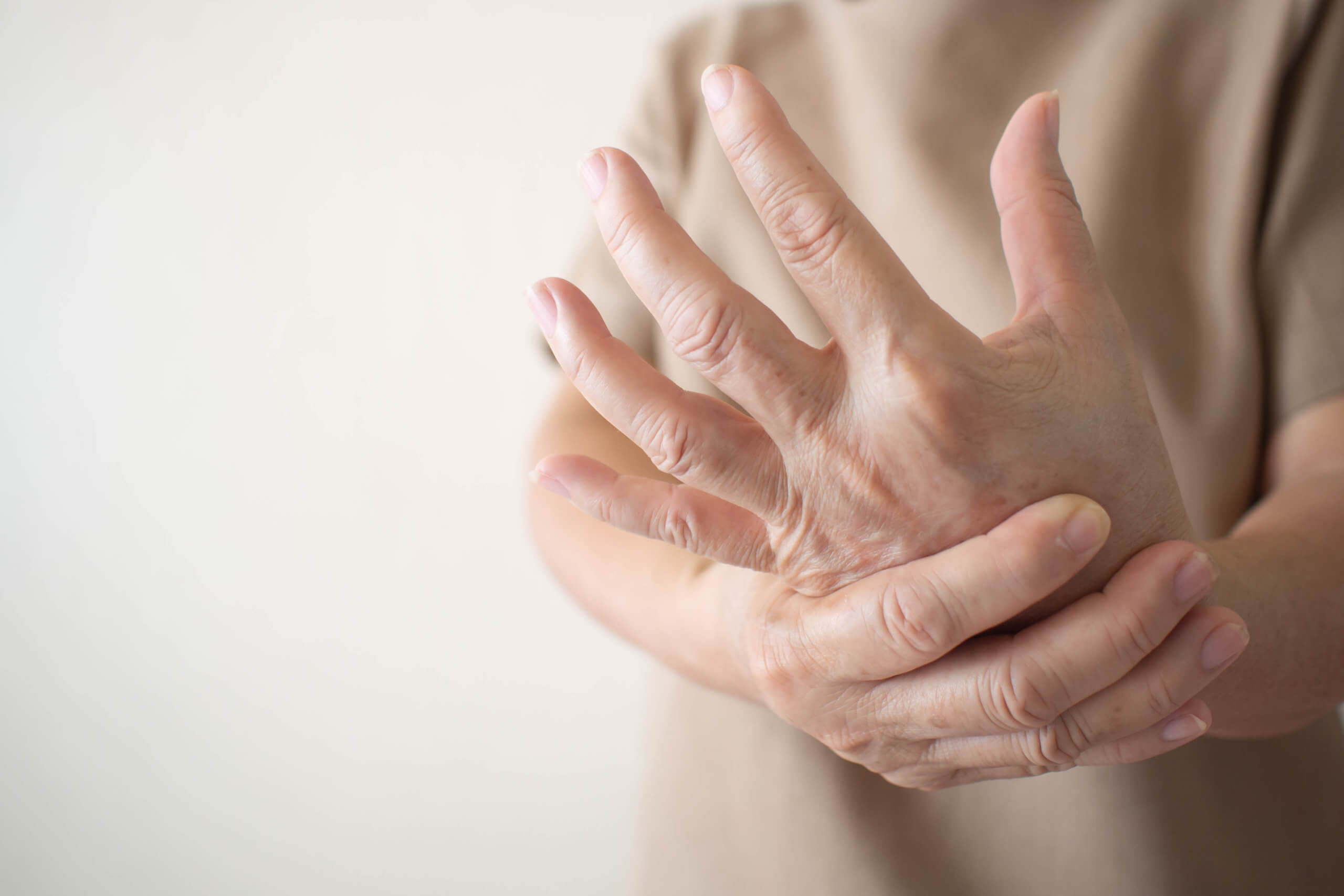Arthritis Awareness Month 2021
 May marks Arthritis Awareness Month 2021. It’s an opportune time to learn more about different types of arthritis, symptoms, treatment, and prevention. Currently, while certain treatments help reduce the side effects of arthritis, there is no actual cure for the condition. In fact, it’s one of the most prevalent, far-reaching health conditions in the United States, affecting upwards of 54 million men and women. According to the Centers for Disease Control and Prevention (CDC), arthritis impacts people in a range of age groups, which includes:
May marks Arthritis Awareness Month 2021. It’s an opportune time to learn more about different types of arthritis, symptoms, treatment, and prevention. Currently, while certain treatments help reduce the side effects of arthritis, there is no actual cure for the condition. In fact, it’s one of the most prevalent, far-reaching health conditions in the United States, affecting upwards of 54 million men and women. According to the Centers for Disease Control and Prevention (CDC), arthritis impacts people in a range of age groups, which includes:
- 7.1% of individuals between the ages of 18-44
- 29.3% of individuals between the ages of 45-64
- 49.6% of individuals aged 65 years or older
The first step in advocating for arthritis treatment is doing exactly what you are now—learning about it! By helping to better understand arthritis and how it affects millions of people throughout the nation—and the globe—it helps encourage a larger awareness of the disease.
In our ongoing efforts to help provide up-to-date, informative education on musculoskeletal diseases and conditions, South Island Orthopedics is honoring arthritis awareness month this year with an in-depth arthritis guide. Below, you’ll gain further insight into how arthritis develops, who is at most risk, symptoms to watch out for, and conservative and surgical treatment methods.
What is Arthritis Awareness Month? A Time to Learn More!
Arthritis Awareness Month 2021 is a time to learn more about arthritis types, symptoms, risks, and treatment.
As briefly discussed, arthritis affects millions of adults in the U.S. But, did you know that children can also develop certain types of arthritis? According to research, an estimated 300,000 children are affected by arthritis.
What exactly is arthritis?
 Arthritis occurs when one or more of your joints becomes inflamed.
Arthritis occurs when one or more of your joints becomes inflamed.
No matter what age a person happens to be, the condition often produces painful and uncomfortable side effects.
While each type of arthritis varies, common symptoms and side effects include pain and stiffness. Now, let’s take a closer look at different types of arthritis and symptoms specific to each variety.
- Osteoarthritis
As the most common type of arthritis, osteoarthritis is the result of wear and tear to joints. Osteoarthritis develops when the cartilage that protects and cushions the ends of your bones diminishes or disappears altogether. Most osteoarthritis occurs from overuse and the natural degeneration of the cartilage due to aging, and trauma. Perhaps not surprising—in light of these factors—athletes involved in repetitive sports involving the hip, knee, and spine are more susceptible to osteoarthritis. Individuals with osteoarthritis most often experience pain and swelling of the joint. This can be caused and/or exacerbated if a person has bone spurs (bone growth along the edges of the joints.) - Rheumatoid Arthritis
Unlike osteoarthritis that results from wear and tear to the joint (usually isolated to one joint), rheumatoid arthritis is an autoimmune disease. This means that instead of protecting the body as it’s supposed to, the immune system produces substances that attack it. In addition to rheumatoid arthritis (RA), some people have lupus arthritis, also classified as an autoimmune disease. Those who have rheumatoid arthritis experience swelling of the joint lining, impacting small and large joints of the body. The most common side effects include pain, swelling, and stiffness. - Post-traumatic Arthritis
Sometimes, when a fractured or broken bone reaches a joint in the body, it damages the cartilage of the joint surface. When this happens, the joint degenerates. This condition is described as post-traumatic arthritis. - Psoriatic Arthritis
You may have heard of the skin disease, psoriasis. When people with psoriasis experience symptoms of arthritis (usually in their larger joints) psoriatic arthritis is likely the diagnosis. - Juvenile Arthritis
As we mentioned earlier, children can be affected by arthritis, with juvenile arthritis as the most common type. - Septic Arthritis
When a joint becomes infected from bacteria entering the bloodstream, the condition is referred to as septic arthritis, causing warmness, tenderness, and redness. - Gouty Arthritis
Gout occurs when uric acid builds up in the bloodstream forming uric crystals. These crystals cause painful inflammation of the joints, with the elbow, knee, ankle, and big toe being the most affected areas. - Spondylytic Arthritis
This type of arthritis centralizes in the spine, with low-back pain as a common symptom. - Lyme Arthritis
Many people are familiar with Lyme disease (caused by a tick bite). But, did you know that untreated, Lyme disease can actually lead to chronic arthritis?
*Interesting Fact* While the list above comprises a portion of the more common types of arthritis, there are actually upwards of 100 varieties of the disease.
Learn more about South Island Orthopedics doctors
Who is Most At Risk for Developing Arthritis?
 While different types of arthritis can happen to anyone at any time, there are several risk factors that increase an individual’s likelihood of developing the condition.
While different types of arthritis can happen to anyone at any time, there are several risk factors that increase an individual’s likelihood of developing the condition.
Arthritis risk factors include:
- Age. The older you are, the higher the risk.
- Gender. Women are more likely to develop arthritis than their male counterparts.
- Obesity. People who are obese are at a higher risk of arthritis. According to the Centers for Disease Control and Prevention (CDC), 23% of overweight and 31% of obese adults living in the U.S. are diagnosed with arthritis.
- Smoking. People who smoke increase their risk of rheumatoid arthritis or can worsen the condition by smoking.
- Infection. Bacteria, viruses, and other microbial agents are known to trigger certain types of arthritis.
- Joint injury. As we discussed earlier, trauma to the joint (from a sports injury, for example) or wear and tear over time significantly increases the risk of arthritis.
- Occupation. Individuals with a job that requires repetitive squatting or knee-bending are more prone to developing osteoarthritis.
- Genetics. Rheumatoid arthritis, systemic lupus erythematosus, and ankylosing spondylitis are all associated with the human leukocyte antigen gene (HLA). People with a family history of HLA class II genotypes can be predisposed to developing arthritis or having worsening arthritis symptoms.
Arthritis Treatment and Management
To determine the presence of arthritis, an orthopedic physician:
- Performs a physical examination
- Takes X-Rays to evaluate joint damage
- Orders blood and lab tests
If arthritis is diagnosed, your physician will propose a treatment plan. Currently, there is no cure for arthritis, but there are treatment approaches to help address and manage symptoms.
Conservative treatment methods include:
- Exercise. Special exercises and stretches can help strengthen and lengthen the muscles supporting the joints. Physical therapy may be prescribed. Routine exercise can also help encourage healthy weight management (this is particularly helpful for overweight patients to help alleviate stress from their joints.)
- Cartilage supplements. Joint Health, a supplement made of the finest quality glucosamine and chondroitin is a special option available through South Island Orthopedics for qualifying patients.
- Medication. Non-steroidal anti-inflammatory drugs (NSAIDs) can help reduce pain and inflammation.
- Injections. Cortisone injections may be recommended to help reduce pain and swelling (but are typically only used sparingly, as they may cause further damage to the joint.) Additionally, your doctor may perform viscosupplementation or injection of hyaluronic acid to help lubricate the joint (typically the knee joint.)
*Prevention Tip* One of the best arthritis-prevention strategies is to “get moving,” according to the CDC. Adults with arthritis should try to get 2 hours and 30 minutes of moderate-intensity aerobic activity per week. And, two-plus days of muscle-strengthening activity.
In some cases, certain types of arthritis may not respond to non-surgical treatment methods, or an individual’s condition may be too severe for nonsurgical approaches. In this case, surgical intervention may be recommended. Surgical procedures to address arthritis include:
- Removal of the damaged joint lining
- Realignment of the joints
- Fusion of bones in the joint
- Partial or total joint replacement
South Island Orthopedics Advanced Arthritis Care on Long Island
At South Island Orthopedics, our board-certified orthopedic specialists provide premium quality orthopedic care, keeping your health and safety a top priority. To help ensure best outcomes, our physicians design personalized arthritis treatment plans—catered to your specific diagnosis and needs.
To learn more about Arthritis Awareness Month 2021, or to get relief from arthritis symptoms and side effects, we encourage you to request an appointment. Together, we can help spread awareness about arthritis and work toward new advancements in arthritis treatment and care.
Posted in: Arthritis, Awareness Month
